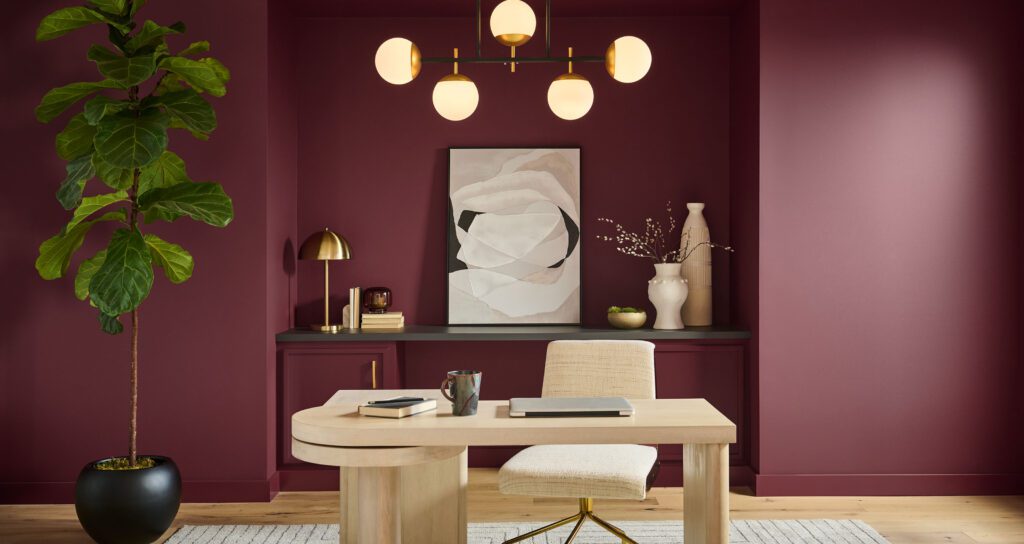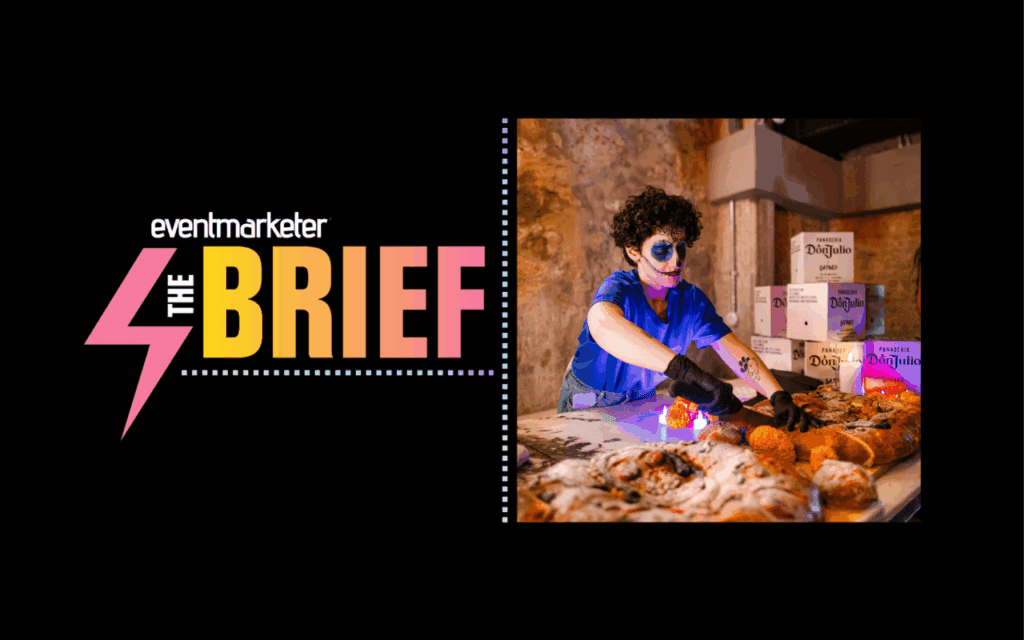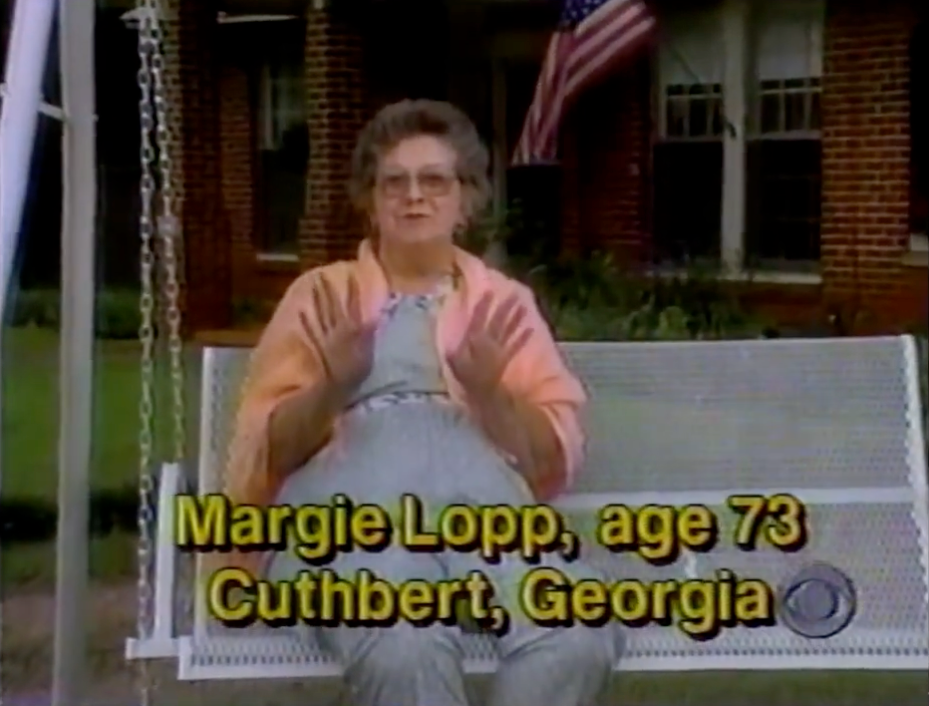Backed by research, trends and consumer surveys, Behr Paint’s annual Color of the Year campaign serves as an antidote for DIYers stuck in a state of “color paralysis.”
The yearly launch of a single, on-trend color is designed to inspire consumers to take on fall home renovation projects with style. According to Andy Lopez, Global Head of Marketing at Behr, it helps DIYers motivate to kickoff projects by providing what may be lacking: the confidence to pick a color.
“We realized through consumer insights that if we’re able to have a color that is trending, is new, and we can position that specific color to be used on projects big or small, it gives them that validation and that color confidence. We’ve seen that through a lot of our data,” said Lopez. “Every time we’re launching a Color of the Year, people really hone in on that color and love using it.” Indeed, Behr sees color sales increase 300% in the first 90 days after it launches.
This year’s color, a deep, ruby red shade dubbed “Rumors,” supports Behr’s research into consumer color preferences: 76% of Americans say they would consider painting a room or a wall a shade of red, and 60% of Americans feel energized by the use of the color red in home design.
The company partnered with The Home Depot once more on retail activations and marketing, and added in new components this year, including a nail polish color collab with beauty company Olive & June, a sweepstakes on Instagram and TikTok, and an experiential reveal for partners and press.
We spoke with Lopez about this year’s program, its myriad marketing benefits, the importance of consumer insights and research to its campaign development, and more.
Chief Marketer: What are the marketing benefits of continuing the Behr Color of the Year campaign year after year?
Andy Lopez, Global Head of Marketing at Behr: Color of the Year has been a huge milestone for us since its inception seven years ago. The reason why we initiated it was [to give] consumers confidence in being able to choose a color. We realized through consumer insights that if we’re able to have a color that is trending, is new, and we can position that specific color to be used on projects big or small, it gives them that validation and that color confidence. We’ve seen that through a lot of our data. Every time we’re launching a Color of the Year, people really hone in on that color and love using it.
That was the inception, and we’ve continued to evolve it every year to bring this immersive experience to our consumers and sustain it as news from our brand. A lot of the times when we’re coming out with a new campaign, it needs a new positioning or a new change. But what’s been nice about Color of the Year is we’ve been able to evolve it, but we see the success of it. On average we’re seeing the color increase 300% in the first 90 days after it launches.
CM: From a marketing and campaign standpoint, what is different this year?
AL: Each year we try to figure out how to go bigger and better. One thing we did this year was around the insights and data we collected. This journey starts nine to 12 months leading up to this point. We look at trends and data on a global level across a lot of different industries as it relates to fashion, auto, technology… And then we also look at home decor trends across the globe, making sure that we have the right insights and inspiration to start narrowing down what we believe our Color of the Year should be. And then we validate that by doing some consumer research and gut check it with consumers.
CM: What did your consumer research show this year?
AL: We did widespread consumer research and we uncovered that 76% of Americans were willing to use red on their wall, or for their entire room. So that gives us validation. We are taking the authority, identifying what that color is, but then get that gut check with consumers to validate it before we launch it on a national level… and make sure that we have some hard data to back up what we’re saying.
Then we look at different things that we can do, via partnerships, or this year we teased it out a little bit on social media before it went to the public. And that’s been getting some great engagement as well. And obviously the color itself is different than what we’ve ever done before, so that helps.
Taking on a DIY project can feel a little overwhelming and intimidating. We’re able to give them that insight directly and make them feel good about the color that we’re telling them they should be putting on their walls.
View this post on Instagram
CM: The partnership with a beauty company is new as well.
AL: We are doing a collaboration with Olive & June. They’ve created a specific nail polish color with our Rumors color. It’s another way to go after a younger audience. They have a great following and a lot of social engagement. That’s been a strategy for us, too: We can position ourselves as a color leader, we can position ourselves to DIYers, but how are we really engaging with this up-and-coming audience who are going to be the largest segment of homeowners? These surprising partnerships is a great way for us to do that.
We also leaned into social media channels like TikTok and Instagram. There’s been a lot of news about the unexpected red theory, whether that’s lipstick or ballet shoes, but it lends itself to home as well, and what a pop of color can do to a room. We make sure that we have a wide range of projects that lean into a younger audience. So if they’re just entering the DIY space for the first time—painting a bench, a hallway, a table—you don’t necessarily have to paint the entire room. And then once they start with the small projects, then they’ll feel more confident in their DIY skills and then hopefully continue to take on a room. It’s usually a domino effect. They’ll start with a small project and then the projects just continue after that.
CM: How does the Color of the Year campaign integrate into larger marketing strategy?
AL: Our ultimate goal is to make color easier. And when we look at the consumer journey as it relates to paint, one of the biggest struggles is color paralysis. People have a hard time choosing a color. We’re trying to solve this issue: How do we get people through the consumer journey faster and make them feel confident about picking the color? That’s what we lean into in order to develop this campaign and launch it, and then be able to sustain it—not just from a PR perspective and an event standpoint, but also through social media and through our advertising.
It’s in the sweet spot [in terms of timing] as well, because if you think of when most people are taking on DIY projects, it’s March through September. So the campaign launch around that August timeframe motivates people if they’ve been putting off their projects.
CM: You’ve partnered with the Home Depot again this year. What’s the continued benefit there?
AL: We can bring our color expertise and they have their trends and design expertise. They’re able to validate what we’re thinking about from a color perspective, but then take that to a full project standpoint. So, how does this color go with any style or aesthetic for a room? They have their decor items that they sell at Home Depot, which make it a one-stop shop for the consumer. We’ve been able to work with them leading up until this event to identify what those projects can be and how we can bring those to life.





